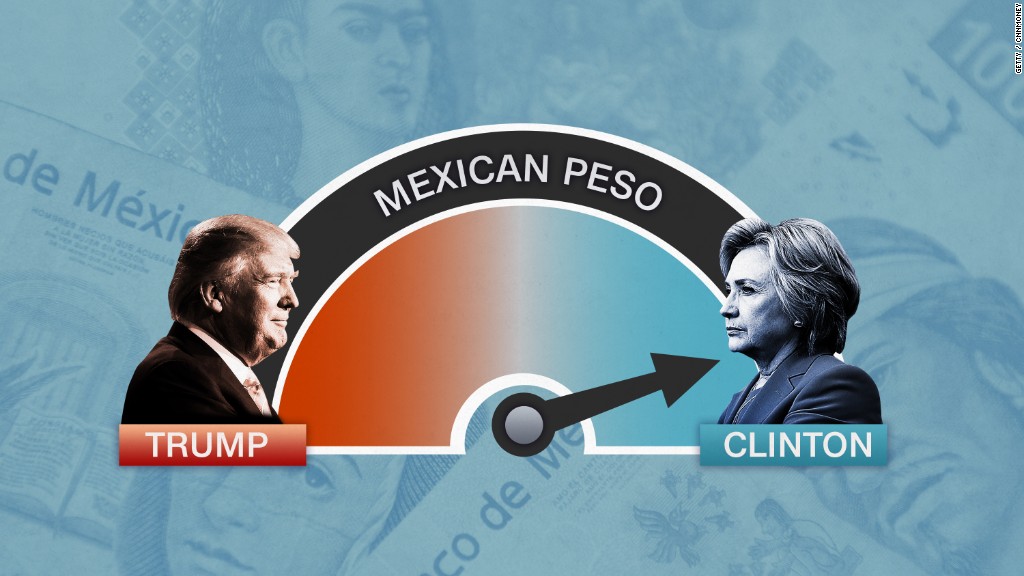
Donald Trump has a big promise for the U.S. economy: 4% growth.
No chance, say 11 economists surveyed by CNNMoney. And a paper published Tuesday by the Federal Reserve Bank of San Francisco backs them up.
"No, pigs do not fly," says Robert Brusca, senior economist at FAO Economics, a research firm. "Donald Trump is dreaming."
The Republican presidential nominee made the promise in a speech in New York in September. "I believe it's time to establish a national goal of reaching 4% economic growth," he said.
Since the Great Recession, growth has averaged 2%. Brusca and the other economists surveyed say that 4% growth is impossible, or at least highly unlikely. The reasons: Unemployment is already really low, lots of Baby Boomers are retiring, and there are far fewer manufacturing jobs today than in past decades.
Trump's team says it will get to 4% growth with tax cuts, better trade deals and more manufacturing jobs.
So what's realistic? The San Francisco Fed estimates the "new normal" for annual economic growth to be 1.5% to 1.75%. That's far lower than the period from World War II to 2004, when growth typically hovered between 3% and 4%.
Related: Stocks would fall 8% if Trump wins, forecasting firm says
One reason for slower growth is lower productivity -- for example, how many widgets an assembly line worker can produce in an hour.
Another problem is that the example of the assembly line worker is increasingly outdated: America has shed about 5.6 million manufacturing jobs since 2000, mostly because of innovation and partly because of trade, studies show.
Manufacturing jobs tend to have higher productivity -- and wages -- than jobs in other service industries like retail, education and health care, which have added lots of low-productivity jobs while manufacturing jobs have disappeared.
Interestingly, American manufacturers are producing more than ever before -- in dollar terms. But as technology replaces jobs on the assembly line, more goods can be produced with fewer workers.
On top of that, the economy is already near what economists consider full employment, meaning the unemployment rate can't go much lower.
Related: Where Donald Trump gets 9.7% unemployment
The unemployment rate is 5% and was as low as 4.7% earlier this year. It can't go much lower because there will always be people leaving jobs or searching for them.
If the job market is already near capacity, the economy can't expand much more, economists say.
Unemployment did go really low in 2000 -- as low as 3.8% -- and the economy was growing above a 4% pace. But the San Francisco Fed attributes those good times to the late 1990s internet revolution.
There are solutions to boost growth, the Fed notes.
Many economists call for more spending on building new roads, bridges and highways, as do both Trump and Hillary Clinton.
After World War II, the creation of the Interstate Highway System was a major boost to productivity and growth. You could go much faster from point A to point B.
Related: I survived: How many Americans feel these days
Other solutions are a little more dreamy.
Many experts say comprehensive immigration reform -- a path to citizenship -- would create more documented workers. Historically, documented workers tend to have higher productivity than undocumented workers because they generally have higher job skills and can take on jobs that produce more valuable goods. Productivity has nothing to do with work ethic.
Outside of immigration reform and infrastructure spending, the Federal Reserve says America needs a game-changing invention, such as the IT innovation in the 1990s. New technology from fast-growing countries like China and India may also help too.
"Another wave of the IT revolution from machine learning and robots could boost productivity growth," says Federal Reserve senior research adviser John Fernald.


